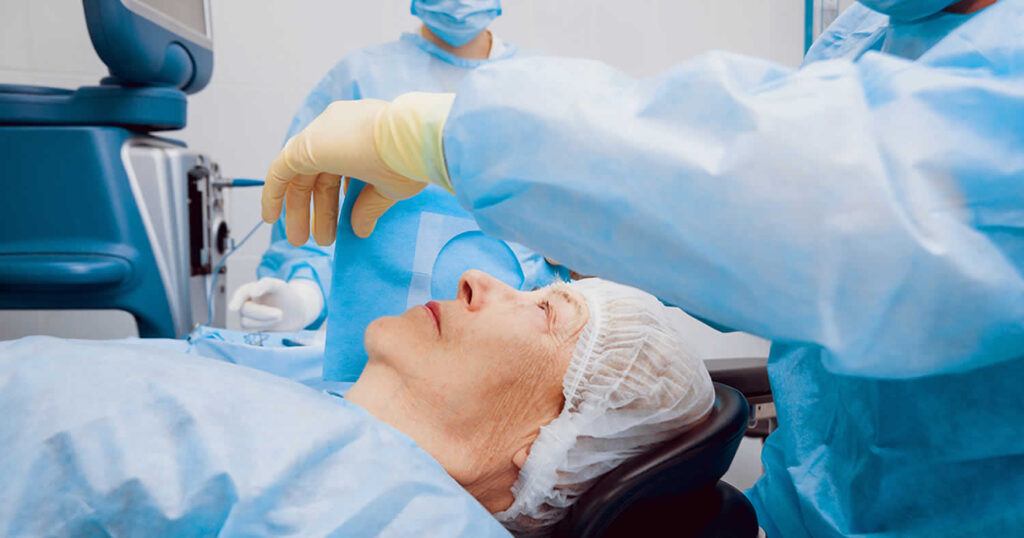Introduction: Seeing Clearly—Your Way
Laser eye surgery has changed the lives of millions of people who once relied on glasses or contact lenses. It offers a permanent solution to common vision problems like nearsightedness, farsightedness, and astigmatism. But when it comes to choosing the right type of procedure, many find themselves caught in the debate: LASIK vs. PRK.
Both are FDA-approved, safe, and effective. But they differ in technique, recovery, and ideal candidates. If you’re in your 30s and finally ready to ditch your lenses, understanding the differences between LASIK and PRK can help you make an informed decision about your eye health—and your future.
Before Surgery: Prepping Your Eyes and Expectations
Before either procedure, you’ll start with a comprehensive consultation. Your ophthalmologist will perform a full eye exam to check your vision stability, corneal thickness, eye pressure, and overall health. Not everyone qualifies for laser eye surgery, and your eligibility depends on a few key factors:
- Age: You should be at least 18, but your 30s are ideal—your vision is usually stable, and healing is faster.
- Prescription stability: Your vision shouldn’t have changed much in the last 12 months.
- Corneal thickness: Thicker corneas favor LASIK, while thinner corneas may require PRK.
- Eye health: No active infections, severe dry eye, or other corneal diseases.
Pre-surgery don’ts: Avoid wearing contact lenses for a few days before your exam. Contacts can reshape your cornea and affect measurements.
Do’s: Ask questions. Your doctor should walk you through both procedures and recommend the best one based on your eyes—not trends.
During Surgery: A Look Inside the Procedure
LASIK
LASIK (Laser-Assisted In Situ Keratomileusis) is the more well-known option. Here’s how it works:
See more: Is it Possible to Get LASIK At an Affordable Rate?
- A thin flap is created on the surface of the cornea using a microkeratome or femtosecond laser.
- The flap is gently lifted to expose the underlying corneal tissue.
- A laser reshapes the cornea to correct your vision.
- The flap is laid back in place—no stitches needed.
🕒 Time: The entire procedure takes about 10–15 minutes for both eyes.
😌 Pain: You may feel slight pressure but no pain.
👀 Tools used: Excimer laser, femtosecond laser (for flap), lid speculum.

PRK
PRK (Photorefractive Keratectomy) takes a different approach:
- Instead of creating a flap, the thin outer layer of the cornea (epithelium) is gently removed.
- The same type of laser reshapes the exposed cornea.
- A bandage contact lens is placed to protect the eye as the epithelium regenerates.
🕒 Time: Slightly longer than LASIK—15–20 minutes.
😬 Pain: Mild discomfort for a few days post-op as the epithelium heals.
👁️ Tools used: Excimer laser, alcohol solution or brush (to remove epithelium).
After Surgery: Recovery and Healing
LASIK Recovery
- Vision: Many patients notice sharper vision within 24 hours.
- Discomfort: Minor—itchiness or dryness for a few hours.
- Back to work: Most people return to normal activities in 1–2 days.
- Follow-ups: First one is usually the next day, then a few more over weeks.
PRK Recovery
- Vision: Takes longer—anywhere from 5 days to a few weeks.
- Discomfort: Moderate—feels like something is in your eye or a mild sunburn.
- Back to work: Plan for at least 5–7 days off.
- Follow-ups: Slightly more frequent to monitor epithelial healing.
While PRK involves a longer recovery, it may be the safer option for those with thin corneas or jobs that risk eye injury (since there’s no flap to dislodge).
Risks and Expectations: What You Should Know
Both LASIK and PRK are considered very safe, with success rates over 95%. However, as with any surgery, risks exist.
Common side effects include:
- Dry eyes
- Light sensitivity
- Glare or halos at night
- Mild discomfort
- Fluctuating vision in the first few weeks
Less common but serious complications:
- Infection
- Overcorrection or undercorrection
- Corneal haze (more common in PRK)
- Flap complications (LASIK only)
Expectation vs. Reality:
Laser eye surgery can drastically reduce your dependence on glasses, but it may not deliver “perfect” 20/20 vision for everyone. Some people may still need reading glasses in their 40s or touch-up procedures later in life.
👉 Think of it like tuning a musical instrument. Your eyes will work better and feel freer—but perfection isn’t guaranteed for every note, especially over time.
Which Is Right for You?
Ask yourself:
- Do you have a physically demanding job (e.g., military, sports)? → PRK may be better due to no flap.
- Do you want fast recovery and minimal downtime? → LASIK might be ideal.
- Do you have dry eyes or thin corneas? → PRK may be the safer option.
- Do you prioritize comfort and speed? → LASIK wins on convenience.
Your ophthalmologist will weigh these factors and guide you toward the best choice.
Conclusion: Clear Eyes, Smart Decisions
Choosing between LASIK and PRK isn’t about which one is better overall—it’s about which one is better for you. Both offer life-changing improvements in vision and freedom from glasses, but they come with different healing processes and considerations.
The good news? In your 30s, you’re in a prime window for long-term success with laser eye surgery. With the right questions, honest expectations, and a trusted eye surgeon, you’ll be seeing the world with newfound clarity—literally.
Next step? Book a consultation and start the conversation. Your future self (and your future vision) will thank you.
